To get started in aquaponics you have to understand the aquaponic system components needed and carefully consider the design, location, and setup that will work best for your space and what you want to accomplish. There are many styles of aquaponic system setups that can work in different applications. From small indoor aquarium setups to backyard installations to larger commercial systems, aquaponic system design can be modified for any space and to any scale. The aquaponic system components may vary in size or style, but every system needs a fish tank, a grow bed or beds, plumbing, plants, and fish. Each aquaponic system component plays a vital role in the success of your system, so it is important to give some thought to design before you get started. Our comprehensive guide will walk you through each component and give you the information you need to make a decision about your setup and which aquaponic system components are needed.
Aquaponics Fish Tank
The fish tank is the home to your aquaponic fish. It is also where the fish waste will be stored and converted to the form the plants can use it in. The tank is your first consideration, and your choices here will be based primarily on the size, available materials, and personal effort. The tank can be as small as an indoor aquarium or as large as you want. Ready-made containers are available in all sizes, including popular options ranging from in-home aquariums to backyard ponds like those used for Koi to food-grade barrels or IBC totes. You can also custom-build a tank or in-ground pond with a little more time and effort. The aquaponics fish tank you choose will determine the number and size of the fish you can raise in the system. It will also affect the number of plants you can grow. Bigger tanks mean more fish, which translates into more plant food allowing you to grow more or a larger variety of aquaponics plants.
Aquaponic Grow Beds
The aquaponic grow beds are another important consideration in your aquaponic system design. The beds will hold your plants and the nitrate-rich water they need to grow healthy and strong. Grow beds made of a darker material are preferred as this prevents light from getting to the roots and will help reduce algae growth. The size of the beds can vary based on available space and how many plants you want to grow. You can consider vertical systems where grow beds are built over each other, allowing you to increase the amount of plants you can grow. You can also use floating beds on top of the fish tank that do not require additional piping or pumps. You can purchase ready-made grow beds or custom-build your own. The bed should be lightweight but sturdy enough to give the plants structure, and it should allow the roots of the plant to be submerged, either at all times or during the flood phase of an ebb and flow system.
Aquaponic Grow Media
Grow media is the term used for the substance that the plant’s roots grow through. In a traditional garden, the most common grow media is soil. Soil provides both the substance and the nutrients. As far as aquaponic systems go, soil is too heavy. Also, plants in an aquaponic system get their nutrients directly from the nitrate-rich water, so soil is not needed. You do need something to provide structure and support to the plants, which is where aquaponic grow media comes into play. The best grow media to use in an aquaponic system setup should be lightweight, mid-sized, and have a neutral pH. Options include crushed rock, hydroponic clay, aquarium gravel, or those made of synthetic materials. Again, you have store-bought varieties, or you may be able to find some local crushed rock or gravel that will serve your purposes. The media needs to be large enough to stay in the grow bed rather than falling into the water, but small enough that it is easy to plant in. Usually, something between 8 and 16 millimeters in size works well.
Pumps and Piping
Another important consideration in your aquaponic system design is the pumps and piping. Pipes need to be sized appropriately for the system, and should be kept clear of debris that could result in clogging or blockage. Depending on which type of setup you prefer, the pump may be one of the most integral parts of the system. In vertical gardening systems and some ebb and flow setups, the pump is necessary to carry the nutrient-rich water from the fish tank to the plants. Selecting a pump that is appropriate for your system size is essential to getting the performance you want.
In smaller systems, a submersible pump will work well. This style sits in the fish tank and works to both pump water to the grow beds and create turbulence, which helps increase the dissolved oxygen in the water. The oxygen ratio is essential to all the organisms growing in your system, including the fish, the beneficial bacteria, and the plants. In larger systems, an inline pump is necessary to produce enough power to move the larger volume of water. You may also want to consider adding an air pump to improve the dissolved oxygen ratios.
Aquaponics Plants
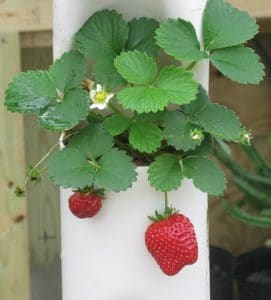
Aquaponics Fish
A variety of fish will adapt well to being raised in an aquaponic system. Aquaponics fish should be chosen for their disease resistance, the ease of raising them, and their growth time. You can select between ornamental varieties or those that can be used for food. Ornamental varieties are an excellent choice for indoor or outdoor fish tanks. Some of the more popular ornamental varieties that are well-suited to an aquaponic system include Koi, goldfish, and Bloodfin Tetras. Food varieties are popular in commercial setups but also work well in backyard home installations. The most common edible species used in aquaponics include tilapia, catfish, and bluegill.
With the right combination of aquaponic system components, you can create the perfect setup for your space and your goals. These considerations are essential to the success of your system. Putting some thought into the design before you get started will make the whole process easier. Keep in mind that sometimes trial and error is the best way to learn a new skill, and this is true in aquaponics and all gardening endeavors. If something is not working the way you want it to, reconsider your design and try again.

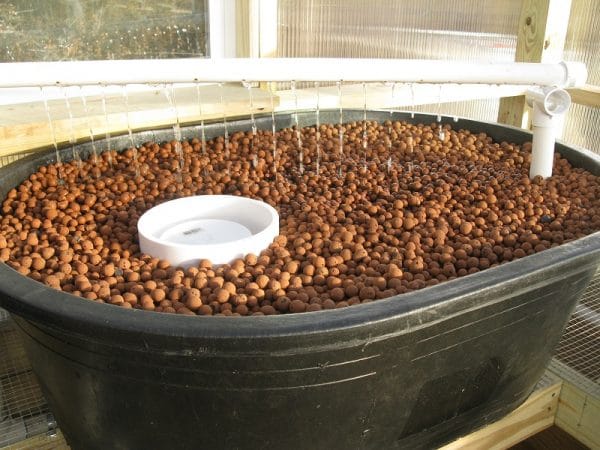
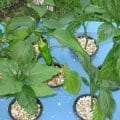
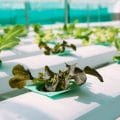





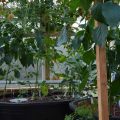
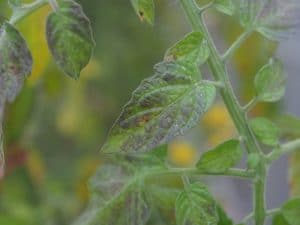
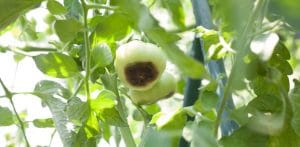
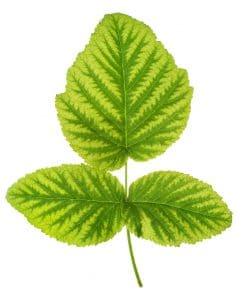
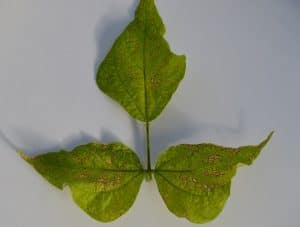
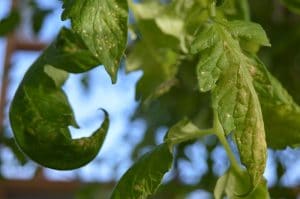
This breakdown of the aquaponic system components is great for first timers that are dabbling with aquaponics. I didn’t really know where to start with finding the best fish, plants and tank and I didn’t even consider the media or beads. Thanks for making it all so simple.